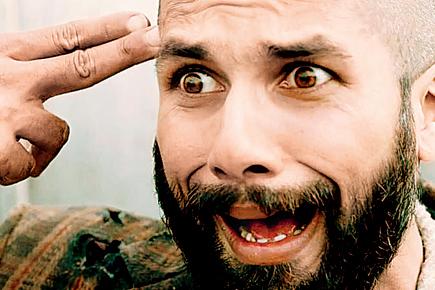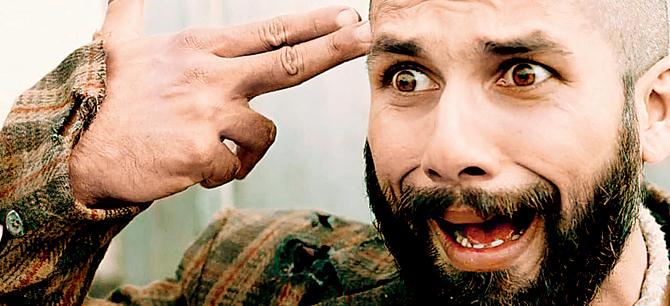When people talk about Indian cinema, almost invariably, Bollywood is the elephant in the room, squishing all other Indian cinemas under its considerable weight

Shahid Kapoor
 When people talk about Indian cinema, almost invariably, Bollywood is the elephant in the room, squishing all other Indian cinemas under its considerable weight. But Indian cinema is absolutely unique in the world, in that India makes films in up to 39 languages and dialects.
When people talk about Indian cinema, almost invariably, Bollywood is the elephant in the room, squishing all other Indian cinemas under its considerable weight. But Indian cinema is absolutely unique in the world, in that India makes films in up to 39 languages and dialects.
And the National Film Awards are one of the few great levelers. It is one of those very rare, and truly prestigious, occasions, when Bollywood, for all its box office clout, stars, budgets and hype, is in an absolute minority. When I was on the National Film Awards Jury last year, I remember sitting at the NFA ceremony, surrounded by a sea of National Award-winning film talents from all over India, with barely a handful from Bollywood. I have to confess that a secret thrill went down my spine: that all Indian film talent was being rightfully acknowledged, without any language hegemony.
ADVERTISEMENT
 A still from the movie Haider
A still from the movie Haider
The 62nd National Film Awards for films of 2014 were announced this week: awards were declared in 28 categories, and only three, yes, three, Bollywood films-Queen, Haider and Mary Kom, won awards in eight categories. The Best Feature Film went to Court by Chaitanya Tamhane, a debut feature in Marathi, Hindi, Gujarati and English, and Best Direction went to Srijit Mukherji for Chotushkone (Bengali). Best Actor went to Sanchari Vijay for his role as a transgender in BS Lingadevaru’s Kannada film Nanu Avanalla Avalu (I am not He, but She). Best Actress went to Kangana Ranaut for Queen. The Indira Gandhi Award for Best Debut Film went to Aditya Vikram Sengupta’s Asha Jaoar Majhe (Labour of Love, Bengali).
It would be foolish to ignore the writing on the wall. Even in Mumbai, the heart of Bollywood, look at the film consumption patterns of non-Hindi films. Take bookmyshow.com's online theatre ticket booking service offerings in the city last week, for instance. It offered 17 Hindi films, and an overwhelming 45 non-Hindi films. Of the 45, the majority of 25 were non-Hindi Indian films in Tamil, Telugu, Marathi, Malayalam, Punjabi, Bengali, Gujarati, Bhojpuri and 19 were English films from Hollywood, and one was in Chinese. And just for some perspective on how non-Hindi film industries thrive: last year, the Hindi film industry produced 263 feature films, but the Tamil industry produced 326 films, while the Telugu industry was the most prolific, with 349 films. Take that, you number crunchers!
Clearly, it is important to strengthen the highly fractured Indian market by building an all-India audience, so films in individual languages can gain an all-India release beyond their regional territories. Indian filmmakers dream of crossing over in the West, but they have not even crossed over within India— and the one billion population market, that the whole world is chasing, is right here. Four things need to be developed for an all-India audience for good films: distribution for good films in all Indian languages, including online digital access, high quality English sub-titling for all Indian films, experienced curators programming good Indian films, and reliable film critics to guide the audience. Good film critics are critical to build all-India audiences of the future for the highly fractured Indian film industry. We need to generate a pool of good film critics who appreciate good Indian cinema, whom the audience can trust, to briefly introduce good films and tell us why they’re worth watching. This calls for expertise and judgement, as a masala film fan has to see only one bad indie film in Marathi, Tamil or Malayalam, and he will probably swear off indie or regional films for life.
A lot of Indians, especially the young generation, dismiss Indian films as being no good, compared to Hollywood. This is mainly because they have not had the opportunity to appreciate good Indian films, and judge them without a thought for the context, local artistic traditions, budgets or industry constraints. They will drop names of directors like Jafar Panahi, Johnnie To, Lars von Trier, Xavier Dolan, Kim Ki-Duk and Apichatpong Weerasethakul. But how many of them would care to drop names of great Indian directors—and actually have appreciated their films—such as Mrinal Sen, Ritwik Ghatak, Adoor Gopalakrishnan, Satyajit Ray, Jabbar Patel, Aparna Sen, Shyam Benegal, Govind Nihalani or Mani Ratnam? Or even the talented, relatively younger directors like Vetri Maaran (Tamil), Kaushik Ganguly (Bengali), Ravi Jadhav (Marathi) or Rajeev Ravi (Malayalam)? The French film industry has substantially benefited from the French New Wave films. They were inspired by film critics who emphatically demanded good films—and when the films fell short, the critics directed great films themselves. India is riding a New Wave, but only with that groundswell, will it lead on to fortune.
Meenakshi Shedde is South Asia Consultant to the Berlin Film Festival, an award-winning critic, curator to festivals worldwide, and journalist. She can be reached at meenakshishedde@gmail.com.
The views expressed in this column are the individual’s and don’t represent those of the paper.
 Subscribe today by clicking the link and stay updated with the latest news!" Click here!
Subscribe today by clicking the link and stay updated with the latest news!" Click here!







